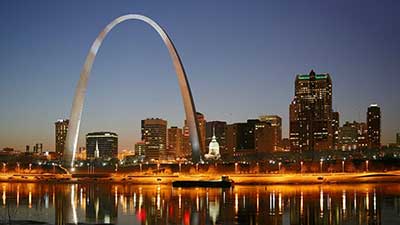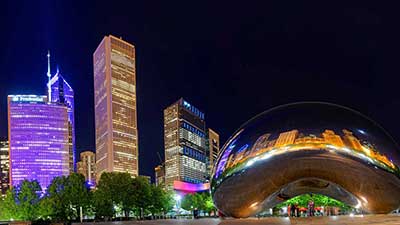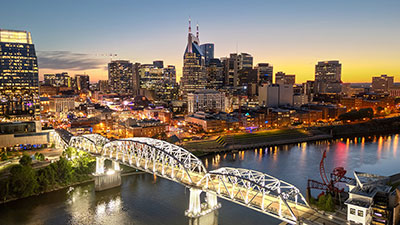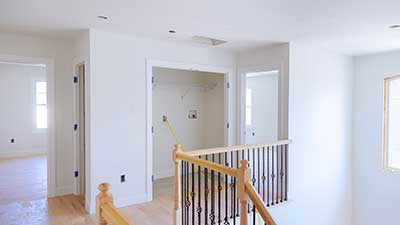A commercial painter specializes in applying paint, stain, and other finishes to large buildings and structures, such as offices, retail stores, schools, and industrial facilities. Unlike residential painters, commercial painters handle projects requiring broader skill sets due to scale and complexity, focusing on maintaining and enhancing property appearance while providing environmental protection.
Commercial painting involves detailed preparation, specialized tools, and deep understanding of surfaces and materials. A well-executed commercial painting job improves building appearance and protects against weather damage, corrosion, and wear, extending the life of structures. Industrial painting often requires specialized knowledge of protective systems for harsh environments.
If you need a commercial painter in St Louis, Chicago, Detroit, or Brevard County, Florida, we’ve got great reviews and 20+ years of experience. Get a quote today!
Key Benefits of Professional Commercial Painting Services
Professional painters provide thorough preparation and coatings that enhance durability of commercial properties. Commercial painting requires skilled professionals to manage complex tasks safely, while hiring contractors ensures efficient completion from surface prep to paint application. Industrial painting applications often involve specialized protective coatings for structural longevity, with experienced professionals delivering high quality finish results combining expertise with project management.
What Does a Commercial Painter Do?
Commercial painters follow a structured process to ensure every project meets quality standards. The job description begins with site assessment and planning, where the painter evaluates surface conditions, identifies necessary repair work, and discusses clients’ expectations.
Surface preparation represents the foundation of any successful commercial painting project. This physically demanding process involves power washing to remove dirt and old paint, scraping deteriorated surfaces, sanding rough areas, and filling cracks or holes. Professional painters understand that proper preparation is vital for achieving a durable, high quality finish that will last many years.
Priming creates a smooth, uniform base helping paint adhere better and ensuring consistent color across all surfaces. After priming, painters apply paint using appropriate tools and techniques. The drying and curing process requires proper time for durability, followed by cleaning and final inspection to ensure quality standards are met.
Essential Tools and Equipment
Commercial painters use a variety of tools tailored to the specific needs of large projects. Here’s a breakdown of commonly used tools:
- Brushes and Rollers: Brushes handle detailed work and edges, while rollers cover large surfaces quickly across walls and ceilings.
- Sprayers and Spray Guns: Efficient for applying paint evenly across extensive areas, making them essential for commercial warehouses and large industrial facilities.
- Pressure Washers: Essential for cleaning exterior surfaces, removing dirt, mold, and old paint before new paint application.
- Drop Cloths and Masking Tape: Protect floors and trim from splatters while ensuring clean lines throughout the painting process.
- Step Ladders and Scaffolding: Necessary for safely reaching high areas and providing stable work platforms.
- Aerial Lifts: Provide safe access to tall or hard-to-reach areas on multi-story buildings.
- Safety Equipment: Includes respirators, harnesses, and specialized protective gear for hazardous environments.
- Plastic Sheeting: Provides comprehensive coverage during spray applications and protects surrounding areas.
- Specialized Equipment: Advanced tools that handle complex coating systems in industrial settings.
Types of Commercial Buildings and Projects
Commercial painters work across diverse facility types requiring specific expertise. Offices and corporate structures need professional environments with clean finishes and minimal disruption to businesses operations. Healthcare facilities including hospitals, clinics, and medical centers require strict hygiene and safety coating requirements.
Educational institutions like schools, universities, and training facilities need durable, low-maintenance finishes. Manufacturing and industrial facilities including factories and production plants require protective coatings against chemicals and wear. Hospitality venues such as hotels, restaurants, and motels prioritize aesthetics that directly impact customer experience.
Retail and commercial spaces need brand-appropriate finishes with quick turnarounds. Commercial warehouses and distribution centers require efficient paint application and protective coatings for floor systems. Infrastructure projects including bridges and municipal buildings demand weather-resistant applications.
Essential Skills and Professional Qualities
Successful commercial painters combine technical expertise with personal qualities enabling excellence in demanding environments. Attention to detail ensures every surface receives even coating with sharp edges and consistent colors. Manual dexterity and color mixing require precise hand-eye coordination for detailed work and expertise in achieving exact specifications.
Communication and customer service involve clear interaction with clients, contractors, and team members. Business management and time management require understanding project coordination and scheduling. Mathematics skills help calculate coverage areas accurately, while listening skills ensure understanding of client requirements.
Professional qualities like diligence, patience, punctuality, reliability, and professionalism support career advancement. Computer skills and willingness to learn enable adaptation to new techniques and materials in the evolving commercial painting industry.
Physical Requirements and Working Conditions
Commercial painting represents physically demanding work requiring specific capabilities. Painters must possess strength to lift 50+ pounds of equipment and materials while handling heavy tools for extended periods. Balance and coordination prove essential for navigating ladders and scaffolding safely while maintaining stability when working at heights.
Color vision enables accurate matching and quality control, while eye coordination supports precise paint application across various surfaces. Workers must bend, squat, and reach in different positions, often working in confined spaces and awkward angles across construction sites, outdoor conditions, and elevated surfaces.
Safety Standards and OSHA Compliance
Commercial painters must adhere to strict safety regulations. OSHA compliance requires adherence to federal safety standards governing construction and maintenance work. Safety equipment requirements include proper use of respirators, harnesses, protective clothing, and proper ventilation systems.
Hazardous materials handling involves safe procedures for chemical exposure, lead paint, and toxic substance management. Height work protocols mandate fall protection systems and proper ladder/scaffolding safety procedures for all elevated work on commercial buildings.
Specialized Materials and Advanced Coatings
Modern commercial projects utilize advanced materials beyond standard paint systems. Industrial coatings include epoxy and urethane systems providing superior durability and chemical resistance. Anti-slip coatings enhance safety while fire-retardant coatings ensure building code compliance.
Floor coatings protect high-traffic areas in commercial warehouses and manufacturing facilities, resisting wear and chemical exposure while maintaining appearance over many years. Environmental coatings offer weather-resistant options for extreme climate conditions, extending coating life while supporting aesthetic maintenance goals.
Career Path and Compensation
Commercial painting offers clear advancement opportunities for individuals interested in building long-term careers in the construction and maintenance industries. Entry level positions include apprentice roles requiring high school diplomas with apprenticeship programs combining classroom instruction and on-the-job training over several years.
Journeyman status follows formal training completion, typically taking 3-4 years of dedicated skill development. Trade certification demonstrates specialized competency in areas like industrial coatings and lead-safe work practices. Leadership roles include foreman and supervisory positions managing teams and coordinating project execution across multiple sites.
Career Progression:
- Entry Level: $30,000-$40,000 annually for apprentices learning the trade
- Experienced Painters: $48,660-$60,000 for skilled positions requiring demonstrated competency
- Senior Level Professionals: $51,000-$75,000 for specialized and supervisory roles
- Advanced Positions: $100,000+ including project managers, estimators, and business owners
Regional variations show some markets paying $32,185 entry wages, while skilled painters in high-demand areas earn 12 percent above the national average. Labor costs vary depending on location, specialization, certifications, and project complexity across different markets
The Value of Professional Commercial Painting Services
Hiring professional commercial painters brings extensive knowledge of surfaces, products, and techniques to every project. They work efficiently with proper tools, completing large projects quickly while minimizing business disruptions. An accurate estimate from experienced professionals helps businesses budget effectively for commercial painting projects.
Safety training and equipment enable safe work at heights and with hazardous materials. Professional applications represent investments in property longevity, with quality techniques ensuring finishes withstand elements and daily wear while enhancing aesthetics through quality assurance and cover and protect surfaces procedures.
Selecting the Right Painting Contractor
Choosing the right commercial painter ensures project success. Check credentials by verifying painters are licensed, insured, and hold necessary certifications. Review past work by examining examples of previous commercial projects to assess quality capabilities.
Get multiple quotes from several painters to compare prices and services while being cautious of significantly lower prices. Ask for references from previous clients and follow up to verify satisfaction and work quality. Choose painters who communicate clearly about project details.
Conclusion
Commercial painting involves more than applying paint—it requires technical skills, safety awareness, attention to detail, and dedication to creating functional, appealing spaces. These professionals play vital roles in maintaining commercial environments that are aesthetically pleasing, safe, and well-maintained.
When you bring in skilled commercial painters, you’re improving building appearance while protecting against environmental damage. Investing in professional services saves time and money, delivering long-lasting results that support business success.
OnDemand Painters delivers professional results for your commercial painting needs. Get your quote today!
FAQs
What is a commercial painter?
A commercial painter specializes in applying paint and finishes to commercial buildings, requiring broader skills than residential work due to project scale and complexity. Commercial painters handle large-scale projects that demand specialized expertise and equipment.
What is the difference between a painter and an industrial painter?
Industrial painting involves specialized protective coatings for harsh environments, while commercial painting focuses on aesthetic and basic protective functions for offices and retail spaces. A professional painter may work in both commercial and industrial settings, but industrial painting requires additional certifications and safety training.
Is commercial painting hard?
Commercial painting is physically demanding work requiring strength, balance, and expertise in various techniques across different surfaces and materials. The job description includes working at heights, handling heavy equipment, and maintaining stamina throughout long projects.
How do painting contractors estimate the cost of a project?
The cost varies depending on factors like the square foot area to be painted, the condition of the surfaces, the type of paint used, and any special coatings or finishes required. Experienced professionals provide accurate estimates based on these elements.
How much does a commercial painter make in Texas?
Commercial painter salaries vary depending on experience, with entry level positions earning $30,000-$40,000 and experienced professionals earning $48,660-$75,000+ annually. A painting contractor or professional painter with specialized skills in industrial painting can earn significantly more.
How do I select the right commercial painter for my project?
Look for professionals with experience and a solid portfolio of past work, proper credentials, and positive client references. Clear communication and detailed job descriptions from the painting contractor are also essential in ensuring a successful project.
What qualifications does a painting contractor need?
A painting contractor must hold proper licensing, insurance, and certifications. Commercial painters typically complete apprenticeship programs and ongoing safety training to meet industry standards and client expectations.
What are the key techniques in commercial painting?
Key techniques in commercial painting include surface preparation, priming, cutting in, and rolling and spraying. Surface preparation ensures a clean, smooth base. Priming creates a strong foundation for the paint to adhere. Cutting in is used for clean edges before rolling or spraying, which efficiently covers large areas.



















